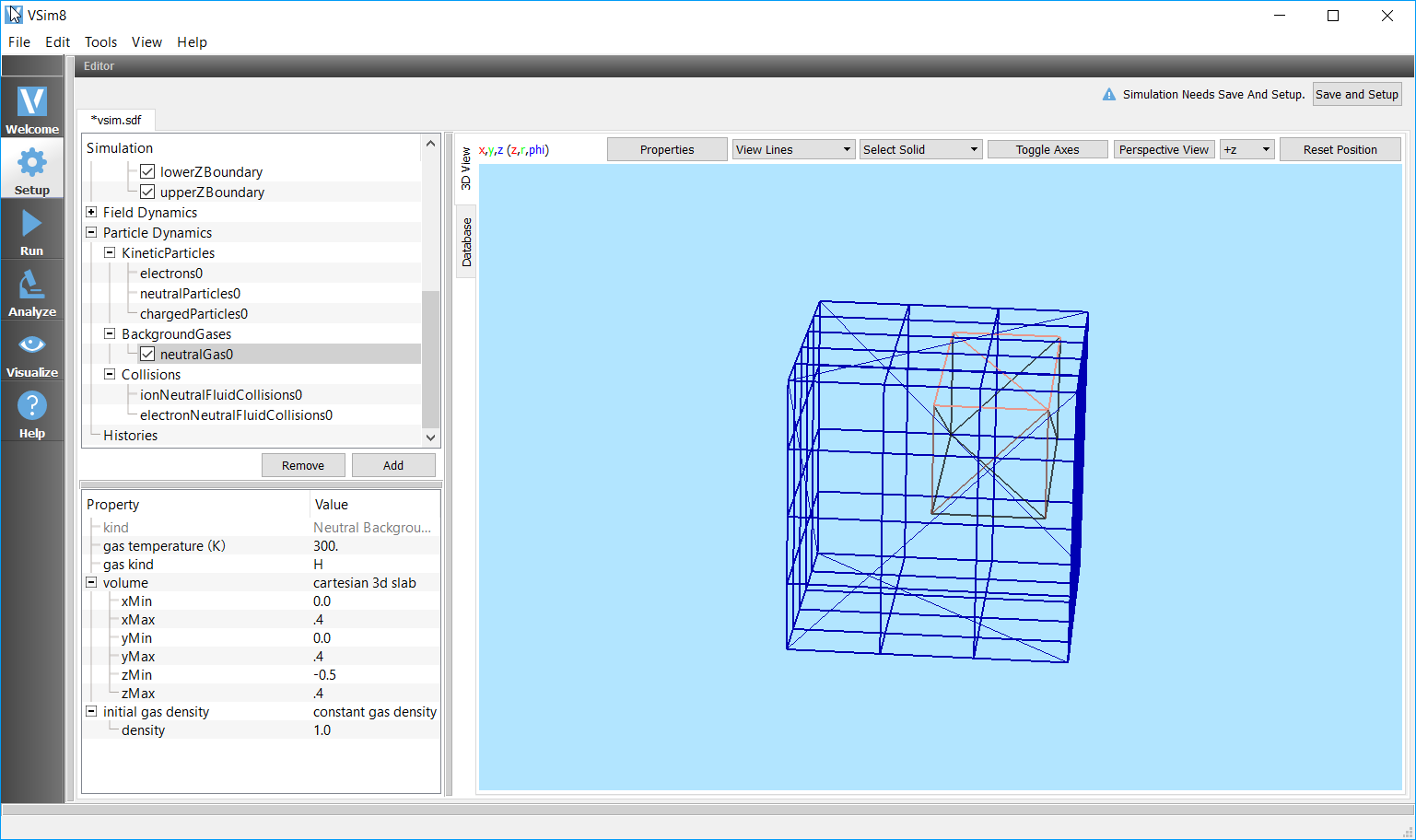Particle Dynamics
The inclusion of Particle Dynamics is determined by the value of particles in the Basic Settings element. If particles is set to no particles, then no particles are in the simulation and the Particle Dynamics element is hidden.
If particles is set to include particles then the Particle Dynamics element is shown and futher properties can be set.
The Particle Dynamics element holds information on any kinetic particles, background gases, and collisions in the simulation.
Kinetic Particles
Electrons, charged particles, and neutral particles can be added to the KineticParticles element.
To add kinetic particles, click the Add –> KineticParticle button located at the bottom of the Elements Tree, or simply right click on the KineticParticles element and select Add KineticParticle and then choose the type of particle you want to include.
The properties of each kind of KineticParticle are modifiable in the Properties Editor pane.
Fluids
Fluids
Neutral Fluids can be added to the simulation. To add a fluid, right click the Fluids button and select Add Fluid
A fluid is a volume distribution where you can provide the min and max values in each direction. A fluid will show up on the 3D View. You can hide a fluid by unchecking the box next to it. Hiding a fluid will not remove it from the simulation, just hide it in the 3D view. See Fig. 57.

Fig. 57 A volume of fluid is shown in the smaller/interior box. The outer box is the grid.
Collisions
There are three frameworks for setting up particle collisions available in VSim. The newest, most flexible, and fastest is the Reactions framework. The Reactions framework supplants the Monte Carlo Interactions framework. The Impact Collider (called “ReducedCollisions” in the Visual Setup) framework is the oldest framework, and is limited to interactions between kinetic particles with a neutral fluid, but runs very quickly.
In the Visual Setup, only one framework can be used at a time.